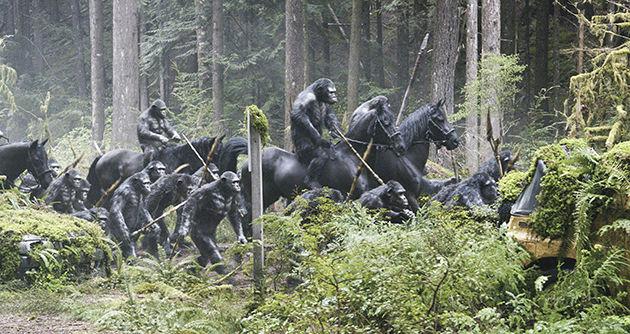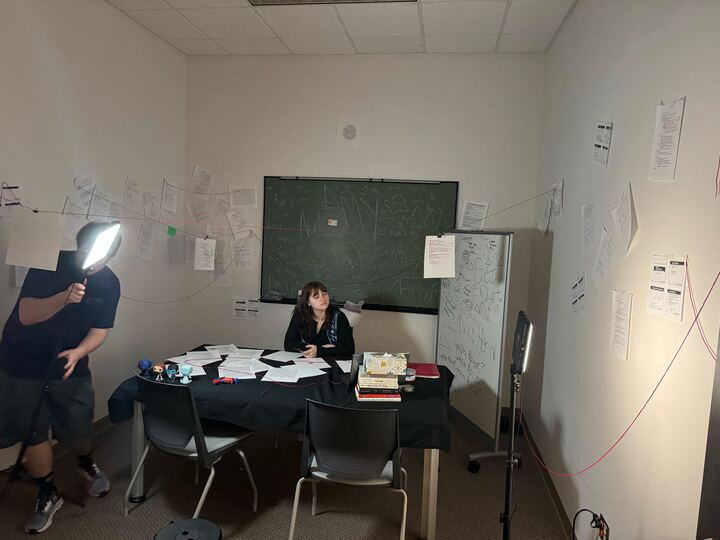Intelligent and surprisingly emotional with absolutely stunning visual effects, “Dawn of the Planet of the Apes” outdoes its predecessor in an intense and entertaining display of what the sci-fi genre can accomplish.
A sequel to 2011’s “Rise of the Planet of the Apes,” Dawn takes place 10 years after the experimental virus seen in the first film becomes deadly and kills most of the human population. The film begins showing how Caesar (the main ape from the previous film) and the other apes have adjusted to their life in the forest on the outskirts of San Francisco. The apes become aware of a colony of human survivors that could be a threat. For a time, there is a fragile peace, however it is short-lived, as both sides force their hands on how little they trust the other. The impending war will determine the dominant species on Earth.
Filled with incredible characters and an emotional storyline, this film has qualities that every movie fan will enjoy.
The film is a bit darker than the first dealing with protecting one’s family in times of turmoil rather than rising against adversity. There are parallels between the humans and apes, with Caesar and Malcolm both seeking peace and prosperity between the species rather than dominance through fear and violence like Dreyfus and Koba.
While the film has notable human characters, the most impressive ones are the apes. Filmed completely with motion capture technology and digital effects, the acting and character development is exceptional.
Andy Serkis, known for pivotal roles like Gollum/Smeagol from the Lord of the Rings and the Hobbit series and King Kong as the title character, plays the head ape Caesar. Serkis portrays the fearless leader wonderfully, adding an in-depth character in the most unexpected place. Everything — from the way he walks to his facial expressions like wrinkling his nose, are captured accurately and convey the deep emotion of the intelligent ape.
The more aggressive Koba (played by Toby Kebbell) is second in command to the colony and seriously distrusts humans. Like Serkis, Kebbell is able to show a wide variety of skills as an actor. Malcolm (played by Jason Clarke) is one of the leaders of the colony and like Caesar wants to thrive and survive in the world they’ve ended up living in.
Dreyfus (played by Gary Oldman) is the other human leader and, like his ape equivalent Koba, distrusts the apes. Both men are convincing in their roles and create a more intense and complex story. Other notable roles are the human doctor Ellie (Keri Russell), the intelligent and imposing orangutan Maurice (Karin Konoval), and Caesar’s young son Blue Eyes (Nick Thurston).
The story in the film doesn’t lack suspense or emotion. The action scenes are intense, while emotional scenes tug the heartstrings of the audience. The character development is the strongest aspect of the whole film, even though most of it occurs in the non-human characters.
Through impressive acting and jaw dropping visuals, the apes become the main focus of the film and the audiences’ attention. The special effects often blur the line between real and computer generated. Many of the environments, like the forest sequences and the street level city scenes were all shot on location, making the apes that much more incredible with how well the filmmakers composited the shots.
“Dawn of the Planet of the Apes” is a film that expands into new horizons for the famous franchise and shows how a wonderful storyline, acting and realistic visuals can make the most unlikely of characters the most important to the movie. Filled with intense action and tear-jerking emotion, “Dawn of the Planet of the Apes” is one of the better movies of the year.
Fun Fact: The original Planet of the Apes, released in 1968, was based off the French novel La Planète des singes. The original spawned four movie sequels and two TV series in the 70’s and a Tim Burton remake in 2001.
Review: ‘Dawn of the Planet of the Apes’
July 8, 2014
0
Donate to The Battalion
Your donation will support the student journalists of Texas A&M University - College Station. Your contribution will allow us to purchase equipment and cover our annual website hosting costs.
More to Discover









